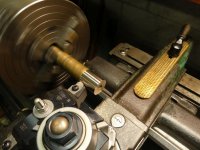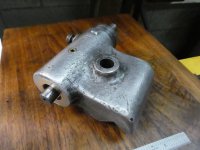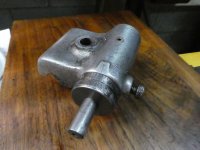So I took a big chance on this very cheap carriage stop a year or so ago for my lathe. Turns out it was better as a paper weight but I kept it thinking that there would be a time when I might re-build it. The time is now.

The internal threads were wasted having been crashed-into who knows how many times over the years. Rendered inoperable.

Most of the rest of it is still usable I figure.

I realized I had a hunk of bronze laying around and I've got a plan to make a threaded sleeve and press it into the aluminum body after I open up the hole. Sort of an ambitious pursuit but I like working with bronze so here we go with a thread...

I will update this along the way. I already have a couple questions to be in the next post. cont...

The internal threads were wasted having been crashed-into who knows how many times over the years. Rendered inoperable.

Most of the rest of it is still usable I figure.

I realized I had a hunk of bronze laying around and I've got a plan to make a threaded sleeve and press it into the aluminum body after I open up the hole. Sort of an ambitious pursuit but I like working with bronze so here we go with a thread...

I will update this along the way. I already have a couple questions to be in the next post. cont...

















